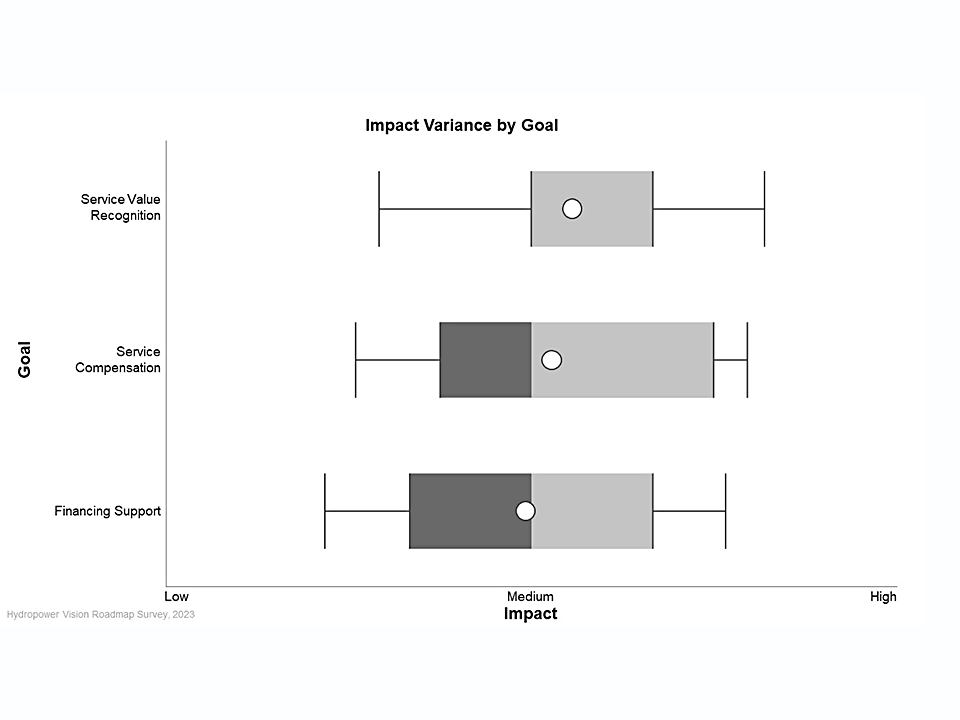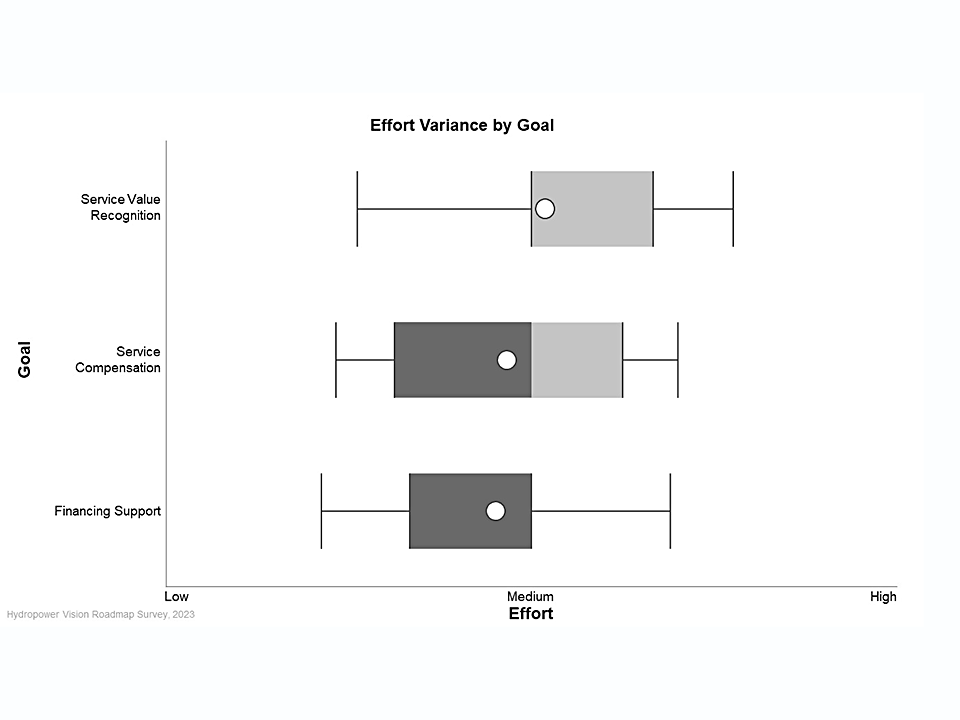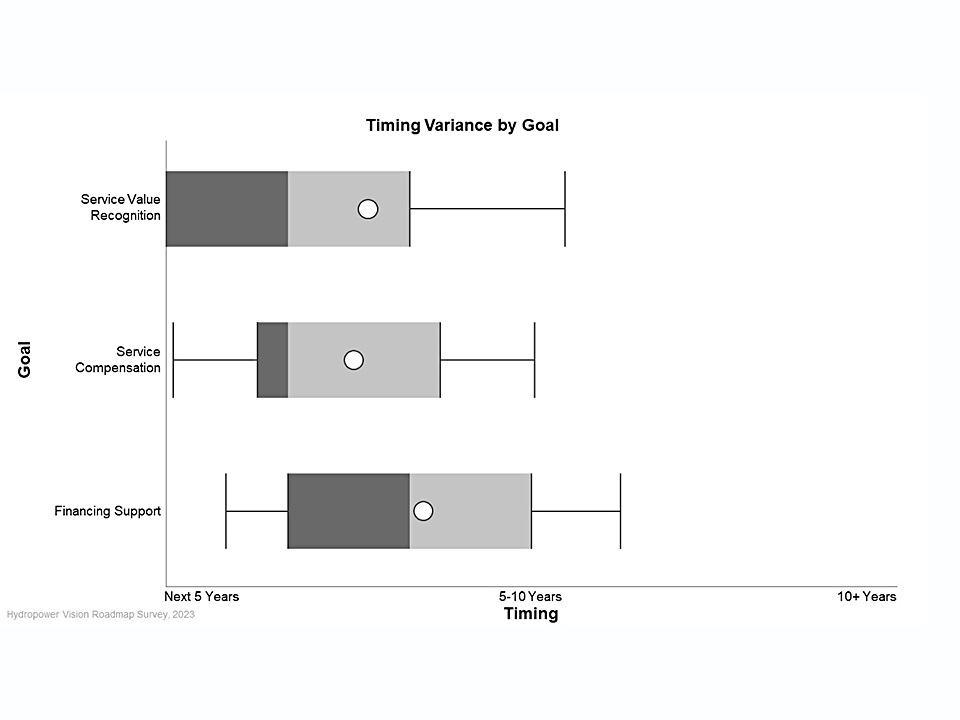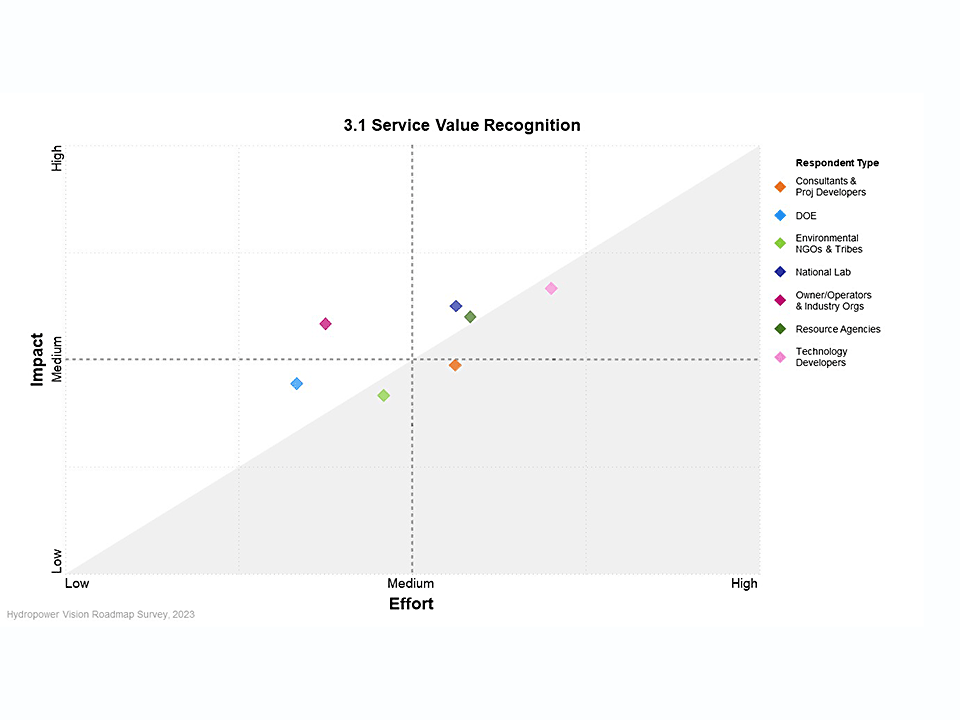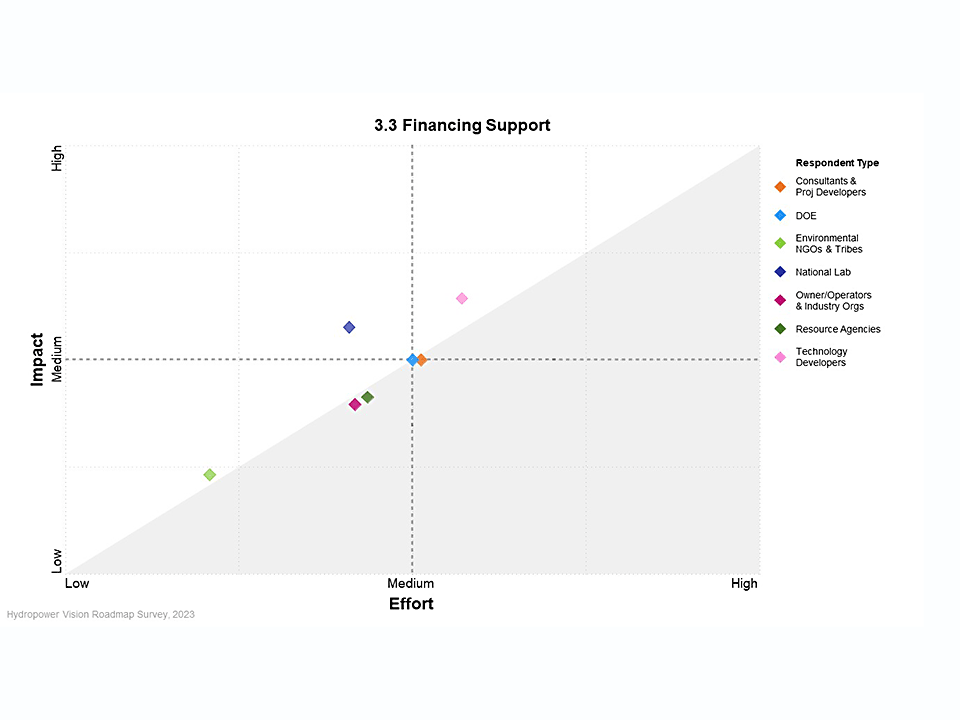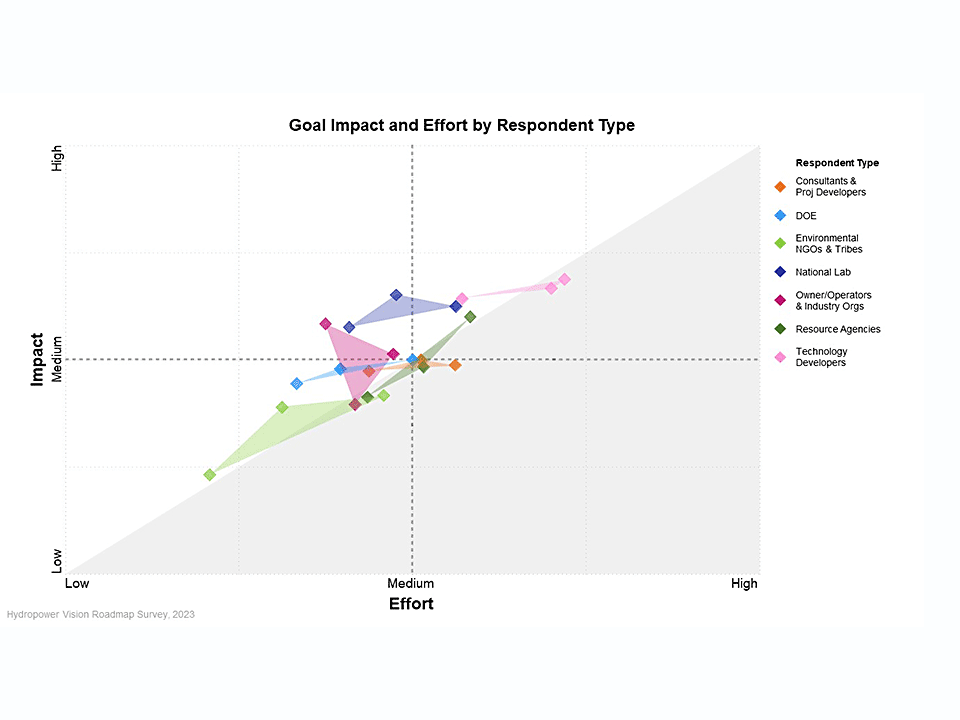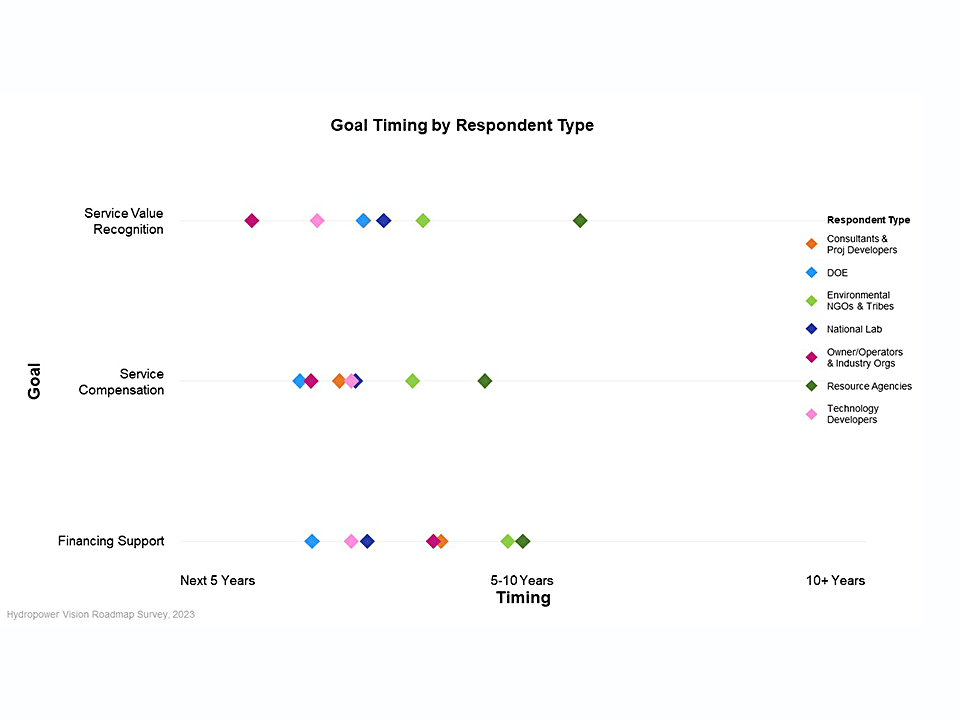 From decarbonization and reliability services to irrigation, flood control, and recreation, hydropower and pumped storage projects provide substantive value to the electric grid, water supply systems, and other sectors over their long asset lifetimes. However, evolving needs of electricity and water systems along with uncertainties in the future value and cost of hydropower create a challenging environment for making investments and operational decisions. The Improved Valuation area addresses these challenges to ensure the power and non-power services provided by hydropower are appropriately recognized and compensated.
From decarbonization and reliability services to irrigation, flood control, and recreation, hydropower and pumped storage projects provide substantive value to the electric grid, water supply systems, and other sectors over their long asset lifetimes. However, evolving needs of electricity and water systems along with uncertainties in the future value and cost of hydropower create a challenging environment for making investments and operational decisions. The Improved Valuation area addresses these challenges to ensure the power and non-power services provided by hydropower are appropriately recognized and compensated.
When mapping the path to 2050, visionaries identified three goals to improve hydropower valuation:
- 3.1 Service Value Recognition
- 3.2 Service Value Compensation
- 3.3 Financing Support
These goals follow a logical progression for supporting robust investment decision-making. The first goal focuses on identifying, evaluating, and applying approaches to understand the value of hydropower’s power and non-power services. The second goal addresses the connection between service value and compensation, monetary or otherwise, to identify potential mismatches and ensure compensation mechanisms account for different scales and timeframes. Then, having established value and compensation mechanisms, the third goal aims to facilitate better access to financing for investments that allow hydropower to provide its services.
Forum members have drawn upon their collective experience and expertise to identify activities that will help achieve each of these goals. Similar suggestions were combined and, if necessary, moved to the area and goal where impact and alignment were greatest. For example, an early focus on market-based compensation mechanisms for grid services and specific clean energy policies was broadened to include non-market and non-power services so that the reimagined roadmap would comprehensively include all ways hydropower and pumped storage might be valued in the future. This approach generated a set of activities that can direct collaboration, strategic planning, and progress tracking efforts across the hydropower community without creating silos of effort.
Goals & Activities
- Goal 3.1 Service Value Recognition – Power and non-power services are understood and valued.
Activity 3.1.1 – Identify shortcomings and needs among existing valuation methods and data that are needed to support valuation studies.
The hydropower community has supported the creation of data, tools, and methodologies to quantify value streams for hydropower and pumped storage assets, but there is a need to identify and address important gaps, including for open-source information. Addressing gaps would enable a more transparent and objective consideration of value.
Activity 3.1.2 – Develop new data and methods for valuing services that will be needed in future systems but are currently unvalued or undervalued.
There are challenges in assigning value to many out-of-market grid services and non-power services provided by hydropower and pumped storage, especially when considering how their value may change in the future. Creating datasets, tools, and other methods to understand the full value proposition to the energy sector and others will help foster discussions around investment and operation strategies that are responsive to an uncertain future.
Activity 3.1.3 – Apply valuation methods to identify relationships between different value streams, the constraints affecting them, and how valuation is affected by changing stakeholder market participation strategies.
Value streams are influenced by a variety of factors and constraints determined by the asset, electricity systems, water systems, and policy and regulatory requirements. Given the expectation of change in technology, market, and policy, it will be important to understand and establish robust relationships between value, broader system constraints, market strategy, and related changes over time.
- Goal 3.2 Service Value Compensation – Service compensation is commensurate with the value provided.
Activity 3.2.1 – Identify existing services that may not be compensated commensurate with the value that they provide in the future.
Following efforts to quantify the value of non-market and non-power services, it is critical to determine how these services are compensated today relative to their value and then establish the context for how they may be compensated in the future.
Activity 3.2.2 – Develop compensation mechanisms for new and undervalued services that will reflect their true value under future system conditions.
Innovative compensation mechanisms, whether monetary or non-monetary, will be important to justify hydropower investment and operational decisions as different contexts change over time. These mechanisms could be system and region specific depending on local policy, hydrology, grid mix, and whether an asset is in a competitive or vertically integrated electricity system.
Activity 3.2.3 – Investigate alternative implementation approaches for compensation mechanisms that can apply at different scales and system types.
Having identified compensation mechanisms, it is important to consider all possible contexts where different mechanisms could or could not be applied. Asset valuation and compensation is subject to many local considerations, can apply to scales ranging from asset to basin to grid, and are subject to local and regional electricity system structures and policies.
Activity 3.2.4 – Research compensation mechanisms in international systems and identify concrete lessons and opportunities for the United States.
Hydropower and pump storage development is more prevalent in international markets, and there are new or innovative strategies that could be applied in the United States. This requires clear articulation of the similarities and differences between U.S. and international compensation mechanisms, which would provide insights into novel mechanisms or useful modifications of existing mechanisms.
- Goal 3.3 Financing Support – Projects can access financing based on the services and value provided.
Activity 3.3.1 – Develop standardized methods of assessing long-term risks and uncertainties across the physical life of hydropower and pumped storage hydropower.
Hydropower and pumped storage facilities are capitally intensive assets with revenue and compensation uncertainty over their long lifetime, which creates risks for investors. Standardized assessment methods are needed to improve confidence and mitigate potential risks.
Activity 3.3.2 – Design financing models that incorporate long-term risks and uncertainties and share all types of risks and returns across different investor classes with different return periods.
Mitigating the long-term financial risk of hydropower and pumped storage investments is both difficult and essential given uncertainties in policy, regulation, and project cost. Innovative financing approaches can incorporate these and other uncertainties while taking advantage of all available policy and regulatory opportunities and sharing risks to alleviate the challenges to financing capitally intensive hydropower and pumped storage hydropower projects.
Activity 3.2.3 – Research financing models in international systems and identify concrete lessons and opportunities for the United States.
Similar to finding novel compensation mechanisms (Activity 3.2.4), it is important to identify similarities and differences in international financing mechanisms to foster innovative ways to finance domestic hydropower investments.
Survey Results
The 2023 Roadmap Survey sought to understand hydropower community perceptions of the impact, effort, and timing of Roadmap goals and activities, as well as the sectors that should be involved to ensure progress is made. Scroll through the images below to see the results for Improved Valuation. Results for other areas can be found on their individual pages under the Roadmap menu.
Below are highlights from the survey results that correspond with the images above.
- Impact Variance: Survey respondents ranked Improved Valuation (IV) goals as having medium impact on average. On average, there was more consensus on the impact rankings for the Service Value Recognition goal, which was higher on average than others.
- Effort Variance: On average, IV goals were ranked as requiring a medium level of effort to execute, and the Service Value Recognition goal was perceived to require the most effort. Survey respondents showed less consensus ranking the effort required for the Service Compensation goal than other goals.
- Timing Variance: To have maximum impact, survey respondents suggested IV goals should be completed in less than 10 years. The Service Value Recognition goal showed less consensus on timing with responses ranging from 5 to 10 years.
- Overall Goal Impact and Effort: Survey respondents perceived all IV goals to have relatively more impact than effort required to execute them.
- Goal 3.1 Impact and Effort: Technology Developers ranked Service Value Recognition higher in impact and effort than other respondents. National Lab and Resource Agencies ranked Service Value Recognition most similarly with relatively high impact and effort, whereas DOE, hydropower owner/operators, and industry organizations ranked this goal as lower effort than other respondents.
- Goal 3.2 Impact and Effort: Technology Developers and National Labs ranked Service Compensation higher in impact than other respondents, but National Labs perceived less effort required than Technology Developers. Other respondents ranked this goal as medium-low in impact and effort with Resource Agencies suggesting it requires a higher level of effort than the impact provided.
- Goal 3.3 Impact and Effort: Technology Developers and National Labs ranked Financing support as higher impact per effort than other respondents. Overall, Environmental NGOs and Tribes ranked Financing Support as significantly lower in impact and effort than other respondents.
- Goal Impact and Effort Spread: Environmental NGO rankings for effort of IV goals varied the most. In contrast, the impact rank of IV goals tended to be similar within other groups, including DOE, Consultants, Project Developers, and Technology Developers.
- Goal Timing: Among all respondents, Environmental NGOs, Tribes, and Resource Agencies suggested the longest timeframes for IV goals, whereas Hydropower Owner/Operators, Industry Organizations, and DOE suggested some of the shortest timeframes.


